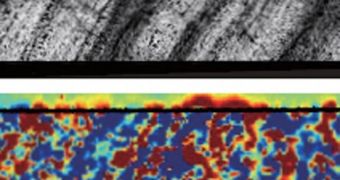Scientists in the United States announce the development of a new investigations tool, that will allow them to study the history of Earth's ancient magnetic fields with greater precision than possible today.
Methods of doing so have been around for years, but they do not have very good resolution in establishing time precisely. A single millimeter of rock, for example, can cover as much as several hundred thousand years.
While the overall result can be used in models, the accuracy of these simulations could be drastically improved if the accuracy of the sediment analysis results are also improved.
Experts at the Massachusetts Institute of Technology (MIT) responded to this challenge by creating a way of analyzing variations in slow-growing seafloor sedimentary rocks called ferromanganese crusts.
These rocks build up in layers of various thicknesses over millions of years. Researchers at MIT and in Japan joined together, and managed to create a technique that works with finer precision than before.
The investigations tool will be used to advance paleomagnetism, the field of research dealing with the study of ancient magnetic fields. Geologists rely heavily on the barcode-like patterns that the natural shifts of our planet's magnetic poles cause in ferromanganese crusts.
“This new instrument allows paleomagnetism to be brought down to the microscale,” explains MIT Department of Earth, Atmospheric and Planetary Sciences associate professor of planetary sciences, Denhamin Weiss.
The expert is also the coauthor of a new scientific paper detailing the research tool, which is published in the March issue of the esteemed journal Geology. The technique is called scanning SQUID (superconducting quantum interference device) microscopy.
“Normally, paleomagnetists collect hundreds of oriented rock cores and spend months analyzing them in order to compile histories of magnetic reversals throughout time,” explains expert Joshua Feinberg.
“The ability to do this on a single 5-centimeter-long sample is impressive, and provides researchers with a well-calibrated tool for dating” seafloor rock samples, he adds. Feinberg is an assistant professor of geology and geophysics at the University of Minnesota.
“Many of us in the paleomagnetic community are eager to use scanning SQUID instruments in our own research […] Our imaginations are the only limitation on how useful this method will ultimately be,” he concludes.
It took the research collaboration more than seven years to develop scanning SQUID microscopy.

 14 DAY TRIAL //
14 DAY TRIAL //